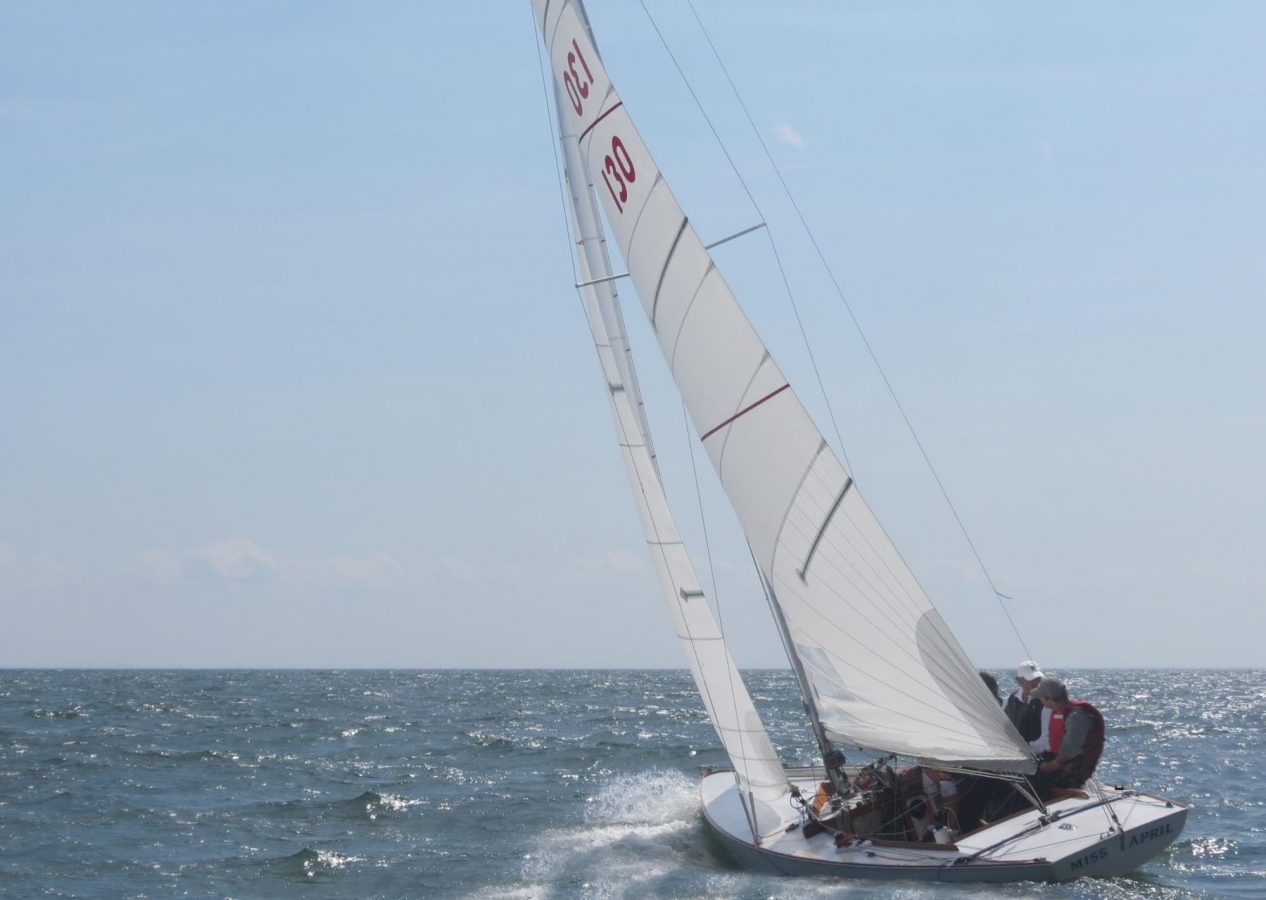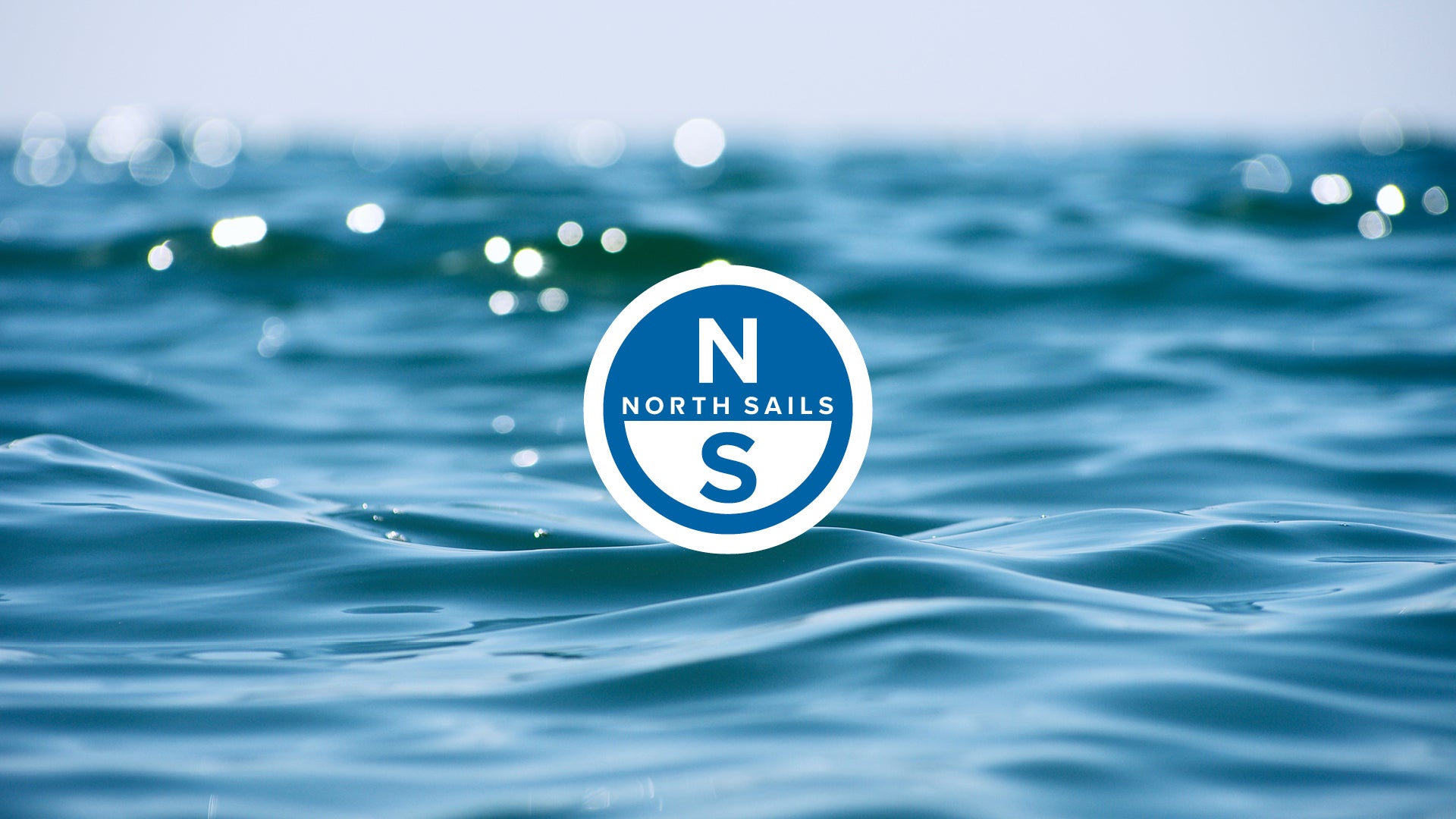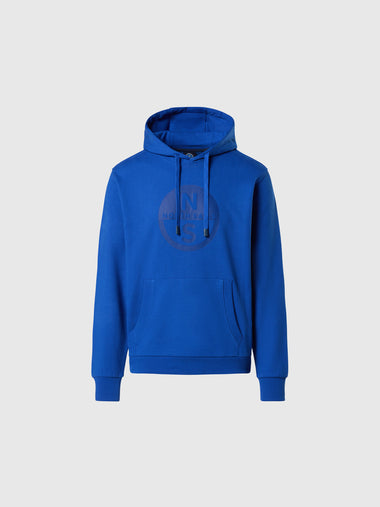NORTH SAILS BLOG
Tout
Events
Guides
News
People
Podcast
Sustainability
Tech & Innovation
Travel & Adventure

TIGHT FINISH AT THE 2018 ATLANTIC NATIONALS
TIGHT FINISH AT THE 2018 ATLANTIC NATIONALS
Steve Benjamin’s Cassady Wins the Title Tied in Points with Dave Peck’s Miss April
Madison Beach Club hosted the 2018 Atlantic Nationals with three days of good breeze that welcomed 27 teams for some competitive racing. Coming into the last race made for a very tight finish between Steve Benjamin’s Cassidy and Dave Peck’s Miss April who tied. Benj won the tiebreaker, securing his overall win. Dave’s brother Norm Peck III finished third place on Nonesuch, just one point behind second place. This was Steve Benjamin’s fourth North American title as a skipper in the Atlantic Class.
North Sails was well represented at the Nationals with Tim Healy sailing on Jeff Shay’s Papa, Rodrigo Meireles sailing with team Savvy from Cedar Point Yacht Club and North Sails designer North Sails expert Ched Proctor stood by for on the water support, checking sails and helping teams tune-up as so they could be ready for racing. We caught up with experts Tim Healy, Rodrigo Meireles, and Ched Proctor to get their take on the event.
Tim, you grew up sailing in Niantic Bay. How special it’s for you to be back in Madison sailing the Nationals?
It was great sailing in the Atlantic fleet again! I was sailing with my good friend Jeff Shay. Jeff was my junior sailing coach in the 80’s and he was also the bowman on my father’s J/24 back in the 1980 for the J/24 Worlds in Newport RI!
It was good to see fellow Niantic sailors, Norm and Dave Peck, battle it out with Benj for the Championship. The Peck’s and the Healy’s have done a lot of sailing with and against each other in many different classes including the 505, Penguin, Interclub, Bluejay, Laser, Lightning and Atlantic. Not only did I learn many important sailing skills from Jeff Shay and the Peck family, I also learned how to ski from both! My parents are friends with their parents from the Niantic Bay YC and we often spent weekends in the winter at their ski house at Magic Mountain VT.
I have many close friends in the Atlantic fleet and it was fun to catch up with them at Nationals. There are many new faces in the fleet as well. There is for sure a growing interest in the class over the past ten years. The boats are beautiful with their classic lines and are very fun to sail!
Rodrigo, you have recently joined the Atlantic class, what’s special about this class so far? How are you enjoying learning to sail a classic boat like the Atlantic?
I have been sailing the Atlantic for about a year now and I really enjoy the boat. The camaraderie of the fleet members and the classic feel of the fleet is truly one-of-a-kind. It was great to come up to Madison to compete at the Nationals with David Polsky from CPYC. I plan to race next year on my own boat.
Ched, you were supporting the fleet on the water checking sails and making sure all the competitors were up to speed for each race. As a sail designer, what’s next for the North Atlantic sails?
Our clients seem pretty happy with the sails as currently designed. It has taken 33 years of designing and evaluating Atlantic sails to get to where we are now, and it is a good place. The sails are fast and easy to handle. The longer battens in the main are a great asset to the class. They make the sails much smoother and allow for the best sail shape.
Learn more about North’s fast Atlantic sails.
2018 Atlantic Nationals
1
Cassidy / Steve Benjamin
2
Miss April / David Peck
3
Nonesuch / Norm Peck III
4
Schucks / Scott Reichhelm
5
Savvy / Dave Polsky
6
— / Chris Wittstock
7
Waypoint / Rory Coster
9
Papa / Jeff Shay
10
Thistle / Mark Foster
* Denotes Partial North Sails Inventory
Full Results
David Peck’s Miss April, 2nd place
Team SeaBiscuit powered by North Sails
READ MORE
READ MORE

ATLANTIC TUNING GUIDE
This tuning guide will cover mast tuning, sail care, boat preparation and sail trimming tips. If you have any questions or need any advise please feel free to contact us.
Remember, this is the general mast set-up and tuning used by the top Atlantic sailors. If you tune your boat by these instructions you will give yourself that advantage you need to win the season series, fleet championship or Nationals.
Tuning the Rig
Before Stepping Mast
Make sure spreaders are solidly fixed and the brackets tightly riveted to the mast. Check to see that they are even height at the shrouds.
Check rake
Hook tape to main halyard and hoist completely to top of the mast (use a safety line in case tape breaks.) Measure to intersection of transom and deck at centerline of boat (back of boat) 40′ 8″ to 40′ 5″, adjust headstay so that you fall in this range.
Tensioning the Shrouds & Centering the Mast
Remove all gear from boat and make sure that ballast is centered. Hook a tape measure on jib or spinnaker halyard and measure down to water on each side of boat alongside of chainplates. Make sure that with tension on the tape being equal that this measurement is also equal on both sides of boat. For future reference, make note if it is equal to the rail on both sides of the boat. On most, it’s 1/8″ or 1/4″ different. Tension the upper shrouds to 880 lbs. Check the rake and adjust the headstay if necessary.
Blocking the Mast at Partners
Put wedges or blocks behind the mast to push the mast forward until you have 2″ – 3″ of pre-bend. Also, put wedges or blocks at the side of the mast to keep it centered in the boat. The center of the boat is not necessarily at the center of the mast partners. Position the mast so it is straight sideways. This may be more easily done after tensioning the lower shrouds.
Tensioning the Lower Shrouds
Tension so that the mast is straight sideways.
Tension should be 620 lbs.
Pre-bend should now be 1 1/2″ – 2″.
Headstay should be barely measurable on the gauge – approximately 5-10. If it is more, push the mast further forward in the partners (thicker blocks behind) and re- tension lower shrouds accordingly. Check rake again to see that is hasn’t changed too much.
Important Things to Remember
Less than 5 knots
Make certain you loosen headstay 3 – 5 turns and use some backstay tension. This will optimize your main and jib shape for light air performance.
Put a shackle or line to let the tack of the jib 4″ above deck. It is too low, the foot will lay on the deck and you won’t be able to get sufficient leech tension.
Setting your Jib Leads
2′ 2″ apart at 8′ 2″ back from headstay. Use a barber hauler to pull the lead outboard 2″ in slop or heavy air (over 20 knots.) Range of fore and aft sheeting is 8′ 1″ to 8′ 6″ with 8′ 3″ to 8′ 4″ being the average – forward for light air and slop (with 2″ barber hauler at same time.) Aft for smooth water and medium air or for heavy air.
Setting the Main Outhaul
Loosen the outhaul so some shelf opens in light air approximately 4″ for smooth water or 8″ for rough water. Tighten progressively as the wind blows harder.
Setting the Main Cunningham
Allow slight wrinkles to come in luff of main up to spreaders in anything under 12 knots. In stronger winds, when the boat is easily heeled down to her lines, pull the luff smooth. If in doubt, allow slight wrinkles in the lower 1/3 of the sail.
Setting the Jib Luff
Loosen halyard until you get a slight wrinkle at each hank for light air. In more wind, pull it just smooth.
Proper Mainsheet Trim
Trim to make top batten parallel to the boom. The sail trimmer should get under the boom and sight up to check for this. It needs to be checked each time another adjustment is made. For flat-water moderate breeze conditions, the mainsheet can be over trimmed to make the top batten point to weather 5 degrees. In light air, slop or in heavy air, under trim so the top batten points to leeward 5 degrees.
Proper Jib Trim
Trim to make the middle batten parallel to centerline. Top batten in light to moderate air points to leeward 10 degrees to 45 degrees, depending on wind pressure — less wind pressure ease some more. More wind pressure, trim harder. As the wind blows harder, the top batten gets more nearly parallel to the middle batten and hence the centerline.
Sail Care
Your North Atlantic sails are constructed with the best materials available on the market. Before we made your sails we tested many different fabrics from the best suppliers in the world.
Mainsail
It is not necessary to remove the battens from the main when storing it. Be certain to roll the sail up parallel to the battens to avoid putting a permanent twist in them.
Watch the mainsail for signs of wear on the batten pockets and where the sail hits the shrouds. Wash the sail off with fresh water when it gets salty and dry thoroughly before storing.
When lowering the mainsail have a crew member at the leech pull back on the leech to help keep the sail from folding on itself.
Jib
When rolling the jib, keep the battens parallel to the leech. Roll from the head to foot. Avoid stepping on the sail when lowered for downwind sailing. Attempt to pull back on the leech when lowering the
jib. Wash the jib off with fresh water when salty and dry thoroughly before storing.
Spinnaker
To prolong the life of your spinnaker, always store it dry and clean. Rinse with fresh water when it gets salty and dry before storing. Fold your spinnaker to store it if possible.
READ MORE
READ MORE



















